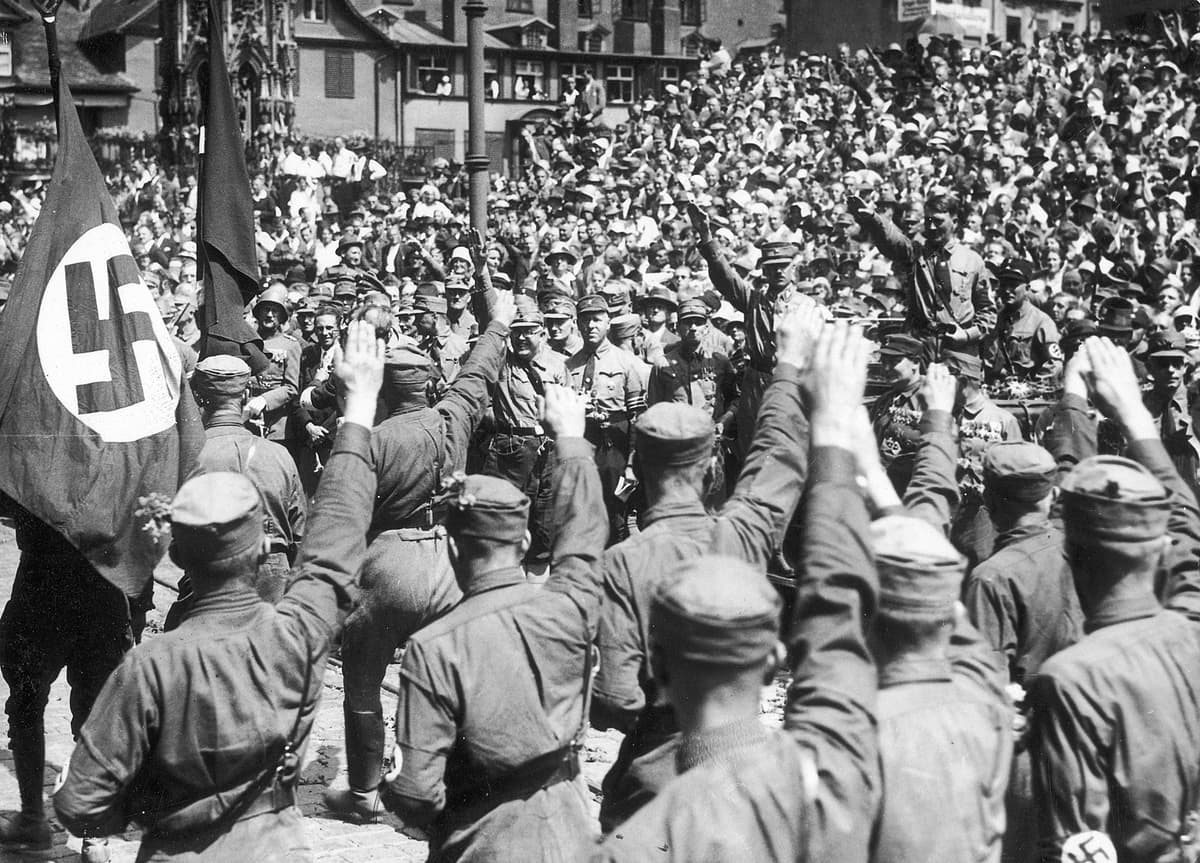All About Hitler’s Highbrow Backers
What we learn is that for fascism to succeed, it must have highly placed accomplices willing to create a kind of infamous infrastructure that infects members of a ruling class.

‘Hitler’s Aristocrats: The Secret Power Players in Britain and America Who Supported the Nazis, 1923-1941’
By Susan Ronald
St. Martin’s Press, 464 pages
‘Traitor King: The Scandalous Exile of the Duke & Duchess of Windsor’
By Andrew Lownie
Pegasus Books, 432 pages
‘Hitler’s Cosmopolitan Bastard: Count Richard Coudenhove-Kalergi and His Vision of Europe’
By Martyn Bond
McGill-Queen’s University Press, 464 pages
Why would those who already possess power and prestige decide to back an upstart like Hitler? Why would Anglo-American “political hostesses, bankers, members of parliaments or Congress, the nobility, diplomats, spies, industrialists, and, as a group, multinational corporations” strive to promote the fascism that Susan Ronald portrays?
Hitler had a sponsor, prominent on the international stage: Princess Stephanie Hohenlohe-Schillingsfürst (aka, the Black Widow). She enlisted and encouraged the duke and duchess of Windsor, Lady Nancy Astor, and cultural figures including two of the Mitford sisters into forming cadres of influencers on behalf of the führer.
On one end is Princess Stephanie, who as described in Ms. Ronald’s dramatis personae is a kind of conniving upstart herself: “Viennese-born Christian of Jewish origin who sold information and became a spy for Hitler.” On the other end is the duke of Windsor, easily bored and petulant, working hard to recover in exile a sense of power connected to the commander of history he thought Hitler to be.
Both Susan Ronald and Andrew Lownie are dealing with stories of the collaborators of fascism that have been told many times, though both biographers have discovered new sources and write riveting narratives with considerable attention given to the nuances of treason.
Less well known is the man who Hitler called a “cosmopolitan bastard.” Unlike the proponents of national socialism who sought in Hitler a strong man to override the weaknesses of liberal, social democracy, Count Richard Coudenhove-Kalergi campaigned for a federated Europe that would one day override “narrow national patriotism.”
The count attracted the support of prominent English conservatives, like Leo Amery, a French politician, Aristide Briande, the Czech president, Edvard Beneš, an anti-Leninist, Alexander Kerensky, Konrad Adenauer, Pope Pius XII, and Charles DeGaulle. Even the chauvinistic Winston Churchill endorsed the idea of a “United States of Europe.”
It seems, though, that the count’s widespread influence diminished as some of the very figures attracted to him began to develop their own schemes of organization that would foster European integration. The count’s ideas became the background theme to the efforts of more politically entrenched actors.
The count was no schemer, like those Hitler enablers, and could never quite insinuate himself into the centers of power that have a way of perpetuating themselves. It is not enough to be ambitious for one’s ideas when others are looking for the quick and the expedient solutions that Hitler favored when expressing his disgust with the cosmopolitan, which is to say, in fascist terms, effete opponents who rely on cooperation rather than conquest.
Reading about Count Coudenhove-Kalergi, I kept thinking about those other counts in Ms. Ronald’s book such as Viscountess Nancy Witcher Langhorne, outspoken antisemite and supporter of Hitler until breaking with him in 1939 after the invasion of Czechoslovakia; Lady Maud “Emerald” Cunard, championing Hitler’s foreign minister, Joachim von Ribbentrop, while she partied with Wallis Simpson, duchess of Windsor.
Edward Freeman-Mitford, 2nd Baron Redesdale, Nazi sympathizer, finally turned against Hitler in 1939 while his daughter Unity Valkyrie sidled into Hitler’s circle, foolishly thinking she would marry him, only to shoot herself when Britain declared war on Germany. She died in 1948, but her sister Diana, married to a British fascist, Sir Oswald Mosley, kept the fascist faith and spent her life attacking anti-fascist writers like Rebecca West (I got a sample of Mosley’s venom in her letter to me).
Charles Vane-Tempest-Stewart, 7th Marquess of Londonderry, made fascism official, so to speak. A British secretary of state for air (1931-1935), and seated in the House of Lords, he came to admire Hitler and spoke on his behalf.
What we learn from Ms. Ronald and Mr. Lownie is that for fascism to succeed, it must have highly placed accomplices willing to create a kind of infamous infrastructure that infects members of a ruling class revolting against the cosmopolitanism that Count Coudenhove-Kalergi promoted and that attracted world famous exiles like Albert Einstein, Thomas Mann, and Sigmund Freud.
Mr. Rollyson is the author of “Rebecca West and the God that Failed,” essays on fascism and communism.

